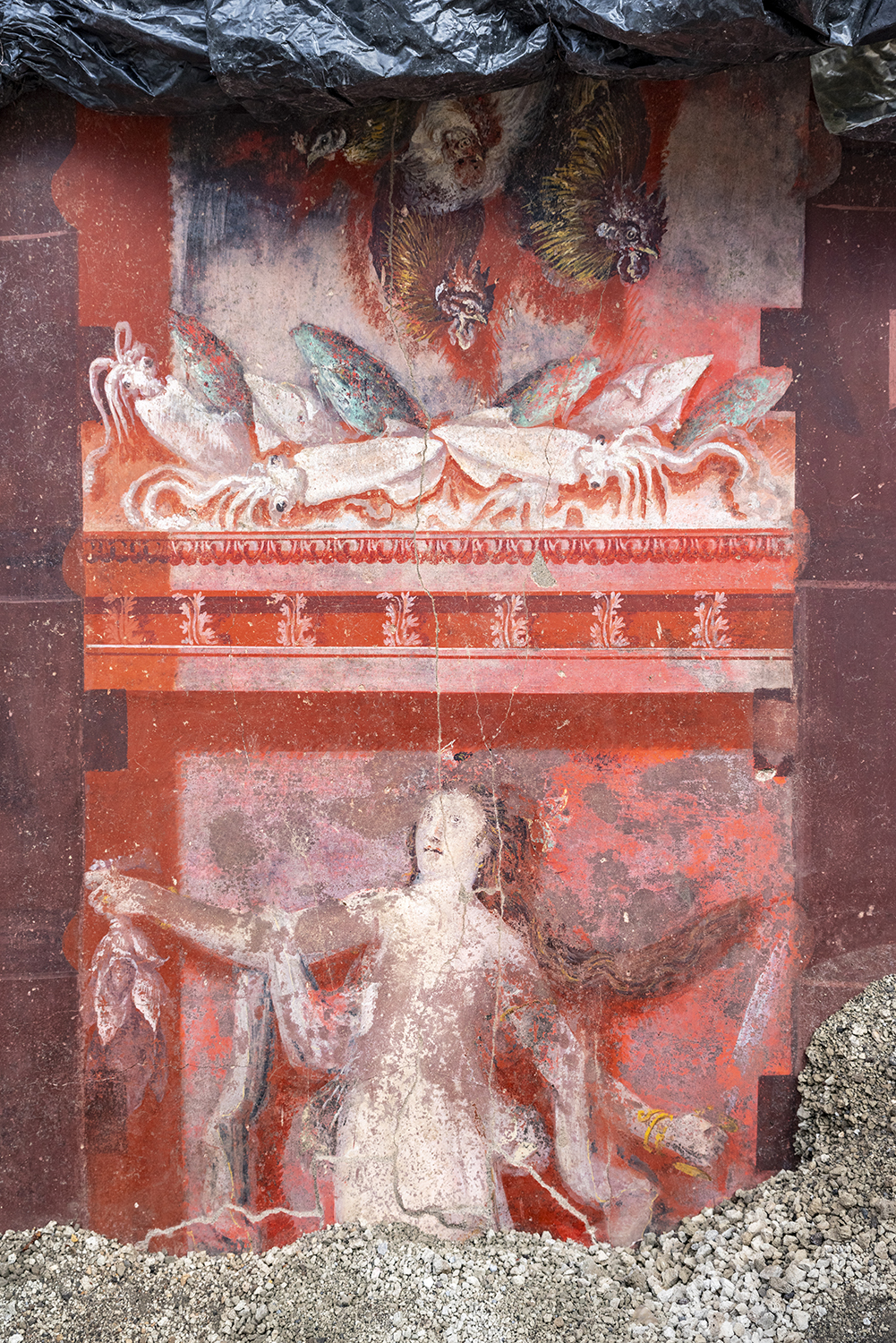Newly discovered frescoes unearthed at Pompeii reveal glimpses of a wine-fueled cult that embraced the “wild, untamable side of women”.
ADVERTISEMENT
The Pompeii Archaeological Park recently announced the discovery of a large-scale frieze that covers three walls of a banquet hall dated to 40-30 BCE. It depicts the initiation rites for a cult dedicated to Dionysus, the ancient Greek god associated with wine, festivity, merriment, and many kinds of madness.
True to the spirit of this god, the scene is a whirlwind of revelry and mayhem.
The painting captures a wild procession of Dionysus in a vivid dance of ecstasy and ritual. Female followers of the god (called bacchantes) are pictured dancing alongside hunters who carry slaughtered goats on their shoulders and clutch swords and animal entrails in their hands. A mythical half-man, half-beast with pointed ears (called satyrs) plays the flute, while another pours a stream of wine over his shoulder into another cup.

A close-up of the newly discovered friezes at Pompeii.
Image courtesy of Pompeii Archaeological Park
At the heart of the scene, a mortal woman stands next to an aged follower of Dionysus holding a torch, as if she is about to be initiated into the mysteries of Dionysus, the god who dies and is reborn, promising the same to his devotees.
“[It’s] a metaphor for a wild, ecstatic life, aiming at ‘something different, great and visible’, as the chorus says in Euripides’ text. For the ancients, the bacchae expressed the wild and untamable side of women; the woman who abandons her children, her home and the city, who leaves the male order, to dance freely, go hunting and eat raw meat in the mountains and woods,” Gabriel Zuchtriegel, the director of Pompeii Archaeological Park, said in the statement sent to IFLScience.
“In short, the opposite of the ‘pretty’ woman, who emulates Venus, goddess of love and marriage, the woman who looks at herself in the mirror, who ‘makes herself beautiful’,” he added.

Not bad for 2,000 years old: Another close-up of the newly discovered friezes at Pompeii.
Image courtesy of Pompeii Archaeological Park
While the frieze is rich in mythological meaning and historical significance, the archaeologists note that the painting also served a rather humdrum role. Just like life in the 21st century, things were not always deep, heavy, and meaningful.
“They are frescoes with a profoundly religious meaning, but here they had the function of adorning spaces for banquets and parties… a bit like when we find a copy of Michelangelo’s Creation of Adam on the wall of an Italian restaurant in New York, to create a bit of atmosphere,” explained Zuchtriegel.
“Behind these wonderful paintings, with their play with illusion and reality, we can see the signs of a religious crisis that was affecting the ancient world, but we can also grasp the greatness of a ritual that dates back to an archaic world, at least until the second millennium BCE, to the Dionysus of the Mycenaean and Cretan peoples, who was also called Zagreus, lord of wild animals,” he continued.
Pompeii was destroyed in 79 CE when the nearby volcano Mount Vesuvius erupted, killing thousands of people in the city and nearby settlements of Herculaneum, Oplontis, and Stabiae. Though catastrophic, the unique conditions of the eruption helped to preserve the ancient settlements for centuries, giving modern researchers an extraordinarily clear window into daily life in ancient Rome.
ADVERTISEMENT
As these newly discovered friezes further highlight, Pompeii was anything but dull – it was a buzzing city, alive with humanity, indulgence, and a fascination with the most sordid of life’s pleasures.
Source Link: Raunchy Paintings Show A Wine-Glugging Cult Of "Wild Women" At Pompeii